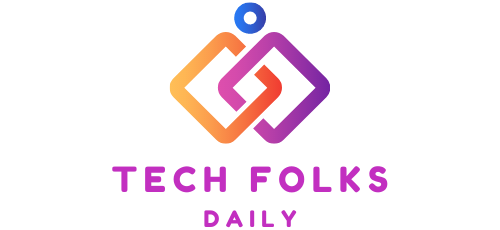Today we are going to discuss the topic: What is HyperText Markup Language (HTML)? Apart from answering this question, we will discuss the history, advantages and disadvantages of its use, evolution, and recommendations for learning this language. So we invite you to stay with us and learn about this exciting topic.
What is HyperText Markup Language (HTML)?
Next, we are going to explain what HTML is for those people who are not developers.
HTML, an acronym for HyperText Markup Language, is nothing more than the hypertext markup language and allows the developer to make and structure sections, paragraphs, headings, links, and block citation elements for web pages and web applications. It must be remembered that the Hypertext Markup Language is not a programming language, which means that it does not allow the development of certain dynamic functionality. However, it will enable you to structure and format documents in the same way as Microsoft Word.
When working with HTML, you use simple code structures – attributes and tags – to develop a web page. To mention an example, a paragraph can be developed by writing the text enclosed within a <p> tag and ending with </p>. In particular, HTML is straightforward to learn, even for non-developers with no experience building websites.
A brief history of the HyperText Markup Language (HTML)
Tim Berners-Lee developed HTML, a physicist at the CERN research institute in Switzerland when in 1989 he was working on a system that could access files online over the TCP / IP communications protocol.
Hypertext is nothing more than a text that has references (links) to other elements that people can access. It released the first version in 1991, and it contained only 18 HTML tags. From then on, each version of the HTML language contains new tags and attributes for the market.
According to the Mozilla Developer Network HTML Element Reference, there are currently 140 HTML tags, some of which are obsolete and are not compatible with current browsers.
As a consequence of its rapidly increasing use and popularity, HTML is considered an official web standard, and specifications are developed and maintained by the World Wide Web Consortium (W3C). The most significant update was HTML5 in 2014, where multiple semantic tags were added to the market, which tells the meaning of its content, for example <article>, <header> and <footer>.
What are the advantages and disadvantages of HTML?
What are the advantages and disadvantages of HTML?
Next, we will show you the main advantages and disadvantages of HTML.
Advantage
- Flat learning curve. It is a widely used language with many resources and a huge community.
- It works natively in all web browsers.
- The World Wide Web Consortium (W3C) maintains official web standards. It is open-source and free.
- It has a clean and consistent markup.
- It integrates easily with backend languages like PHP and Node.js.
Disadvantages
- Its main use is for static web pages. To achieve functionality dynamically, you need to use JavaScript or a backend language such as PHP.
- It does not allow the user to develop logic. As a consequence, all web pages must be implemented separately, even if they are the same elements, say headers and footers.
- Some browsers embrace new features slowly.
Also Read : The Best Laser Keyboards of 2021
How does HTML work?
How does HTML work?
HTML documents are nothing more than files that end with the extension .htm l or. htm; it can be viewed using any web browser, say Google Chrome, Safari, Mozilla Firefox, or Internet Explorer. The browser reads the HTML file and shows the content so that users can see it.
Generally, the average website has multiple different HTML pages, say the home pages, about pages, and contact pages, all in separate HTML files.
Each HTML page is made up of multiple tags – also known as elements -, they can be known as the basic components of the page or website. A hierarchy is developed that organizes the content into sections, images, headings, and other content blocks. The multiple HTML tags contain an opening and a closing that uses the <tag> </tag> syntax .
HTML development. What are the differences between HTML and HTML5?
HTML development. What are the differences between HTML and HTML5?
Since its inception, HTML has had an amazing evolution. W3C is constantly releasing new versions and updates, while milestones have unique names. HTML4 – currently called HTML – was released in 1999, while the latest version was published in 2014, under the name HTML5, which introduced powerful new features to the language.
One of the expected features is the native support for incorporating audio and video. Instead of using Flash, you can embed video and audio into web pages using the <audio> </audio> and <video> </video> tags . It also has support for scalable vector graphics (SVG) and MathML for mathematical and scientific formulas.
HTML5 introduced semantic improvements, semantic tags tell browsers about the meaning of content, which benefits both readers and search engines. The most popular and used tags are <article> </article> , <section> </section> , <aside> </aside> , <header> </header>, and <footer> </footer> .
How can HTML, CSS and JavaScript be related?
Although HTML is an excellent language, it is not enough to develop a professional website; it can only be used to add text elements and create the structure.
But, HTML works excellently with other frontend languages: CSS and JavaScript. Together, you can develop a good user experience and implement very advanced features.
- CSS is responsible for styles, such as background, colours, layouts, spacing, and animations.
- JavaScript gives you the ability to add dynamic functionalities such as sliders, pop-ups, and photo galleries.
How can you learn HTML?
As it is known, HTML is one of the easiest languages to learn as it is very human-readable. You can start writing your HTML web pages with a text editor like Notepad, but there are also HTML editors for this purpose to do a better job.
One of the sites to learn online is W3Schools, and you can find many examples of multiple HTML elements and apply this knowledge with exercises and questions. Also, another site is Codecademy that is worth consulting.
And then … What is HyperText Markup Language (HTML)?
HTML is the main markup language on the web. It runs natively in browsers and is kept up to date by the World Wide Web Consortium. It can be used to develop the content structure of websites and applications. It is at the lowest level of frontend technologies, which adds styles with CSS and dynamic functionalities that can be developed using JavaScript.
Also Read : The 6 Best Samsung Phones of 2021



